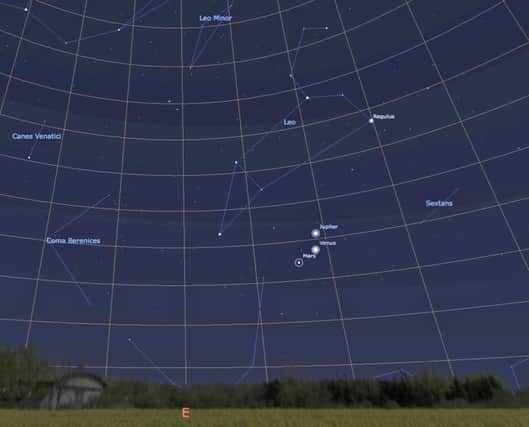Venus, Jupiter and Mars to ‘dance in morning sky’


Professor Mark E. Bailey of Armagh Observatory says from mid October to the first week of November the planets will be seen in the morning sky in the east just before dawn.
He says that over the next three weeks the sequence of close approaches to the Earth by the three plancets “will provide
Advertisement
Hide AdAdvertisement
Hide Adsky-watchers with some wonderful photo opportunities as well as the chance to see clearly the daily motion of the planets both with respect to each other and against the fixed stars.”
“During this period, at approximately 06:00 (BST), the red planet Mars lies in a roughly ESE direction at a nearly constant altitude of approximately 25 degrees above the horizon.
“Meanwhile the giant planet Jupiter, which is rising higher in the sky, passes less than an angular diameter equal to that of the Moon from Mars on October 17.
Then, on the October 26, Jupiter passes approximately a degree from the brightest object in the sky at this time, namely the “morning star” Venus.
Advertisement
Hide AdAdvertisement
Hide Ad“At the same time, Venus is dropping lower in the sky with respect to the background stars, and passes within a degree of the much fainter Mars around the November 3.”
Professor Bailey says close approaches are rare, and when they occur “always provide an interesting and changing view of the night sky.”